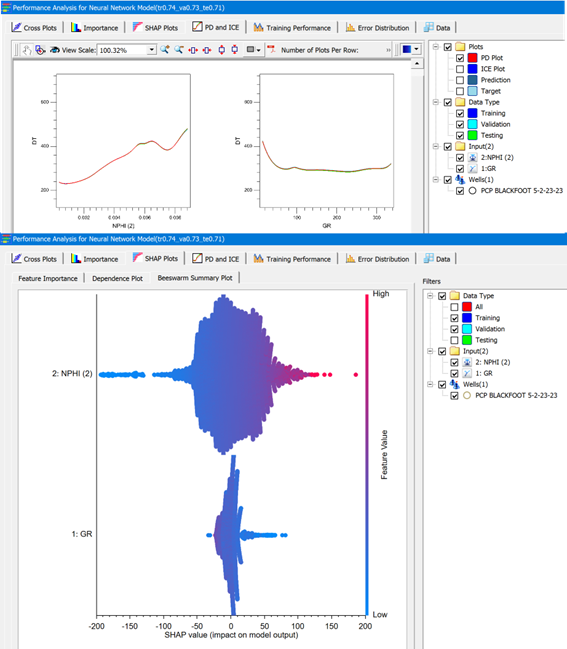By using SubsurfaceAI, geoscientists can effectively predict missing well logs without needing to write any Python code, streamlining the integration of ML into traditional G&G workflows.
Predicting Missing Well Logs
Author: subsurfaceAI
Predicting Missing Well Logs with Machine Learning Without Python Script
Well logs are critical for understanding reservoirs and optimizing exploration and production planning. Unfortunately, many wells lack a full set of log curves necessary for quantitative analysis. For example, shear wave sonic logs are often unavailable, and wells drilled 30 years ago might not have conventional sonic logs needed for generating synthetic seismic data for well ties. However, some common logs, like gamma ray and neutron porosity logs, are usually available.
Since well logs reflect the near-wellbore properties of sedimentary rocks, it is reasonable to expect relationships among these logs, even if those relationships are complex and nonlinear. Machine learning (ML) algorithms, such as neural networks and gradient boosting, can model these complex relationships to reconstruct missing well logs. Once trained and validated, these models can be applied to hundreds or thousands of wells in the same basin with a few clicks.
Utilizing ML Without Python Coding
Traditionally, ML work requires Python coding skills. However, SubsurfaceAI allows geoscientists to leverage advanced ML workflows without writing any code. SubsurfaceAI provides user-friendly tools for geoscience and geophysical (G&G) workflows. This blog outlines an ML workflow for predicting missing well logs using available log curves.
Example Project
In the example project, we have multiple wells in a study area where only one well has a shear sonic log, some have compression wave sonic logs, and all have neutron and gamma ray logs. The goal is to predict shear and compression sonic logs for all wells. The same workflow can also predict other properties like porosity and permeability.
ML Workflow for Predicting Missing Logs
Step 1: Well Log Normalization and Data Conditioning
Data conditioning is crucial for any quantitative analysis, especially predictive workflows. SubsurfaceAI software provides tools to remove noise and spikes, normalize logs, resample data, and perform calculations across wells (Figure 1).
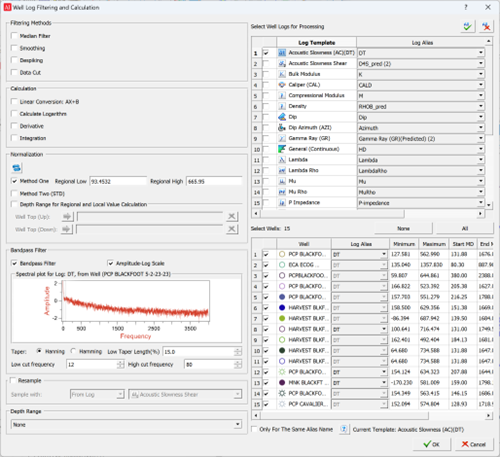
Step 2: Building ML Models
Select wells for training and exclude a few for blind testing. In this study, we use the well PCP 5-2-23-23 in the Blackfoot area of Western Canadian basin for training. Gamma ray, neutron porosity, and sonic logs are used to train three ML models: a feedforward neural network, XGBoost, and Random Forest (Figure 2). Predictions from these models are shown in Figure 3. The training uses 80% of the data, with 10% for validation and 10% for testing. The Random Forest model had the best correlation with the actual sonic log used in training (0.926).
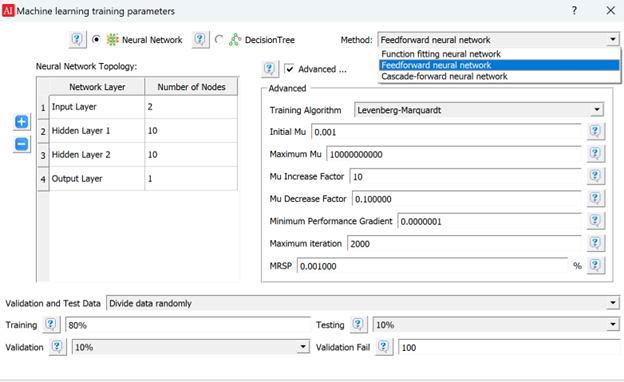
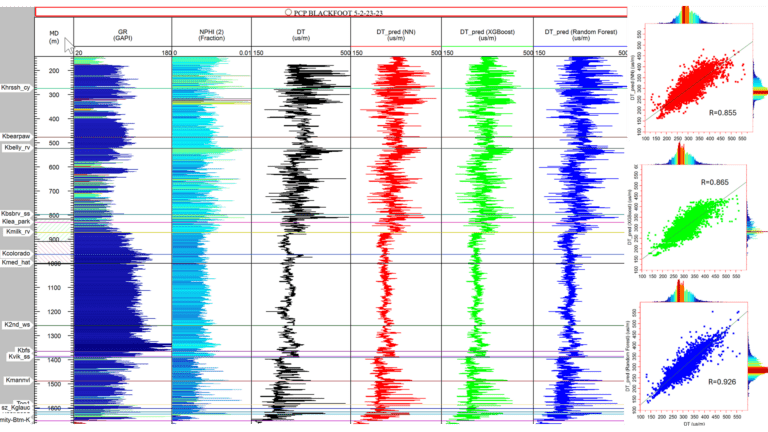
Step 3: ML Model Cross-Validation and Performance Analysis
ML models must be validated with data not included in the training set. We used the well Harvest 8-8-23-23 for blind testing. Figure 4 shows the correlation between actual and predicted sonic logs using the three ML models. The correlation in the blind testing well is not as high as in the training well, emphasizing the need for model validation.
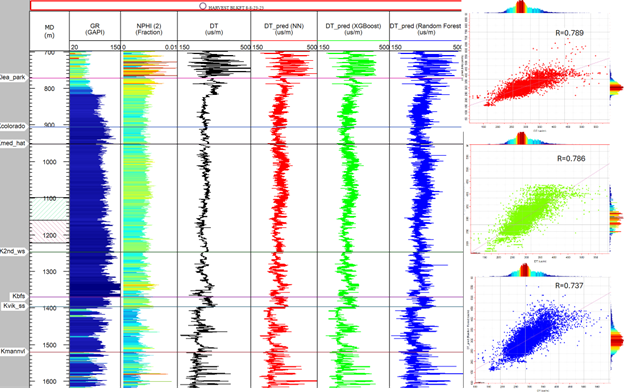
Step 4: Applying ML Models to More Wells
After validation, the trained model can be applied to many other wells. For wells drilled decades ago without sonic logs but with gamma and neutron porosity logs, the trained model can predict the missing sonic logs. These predictions can be used to generate synthetic seismograms for better well ties or quantitative seismic interpretation.
Explainability in ML Models
ML models are often seen as “black boxes.” However, tools like Shapley plots, Partial Dependence (PD) plots, and Individual Conditional Expectation (ICE) plots help make ML models more explainable. SubsurfaceAI provides a “Performance Window” to analyze ML models using these tools, helping users understand the relative importance of each input and well to the ML results (Figure 5).
